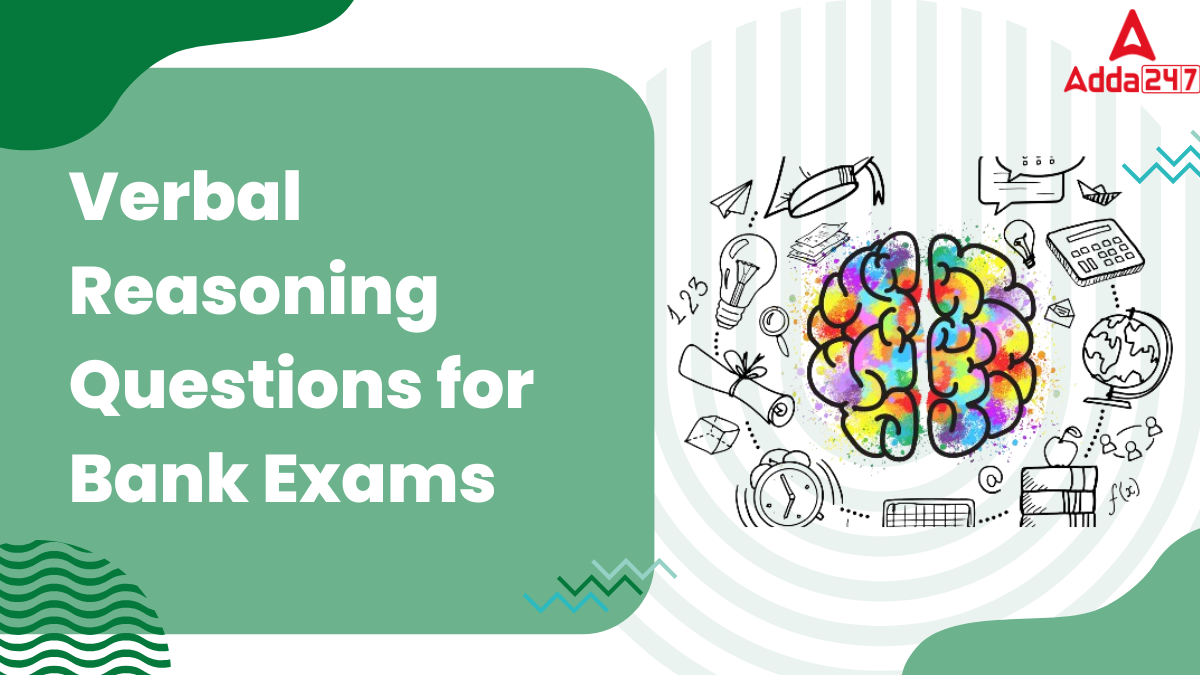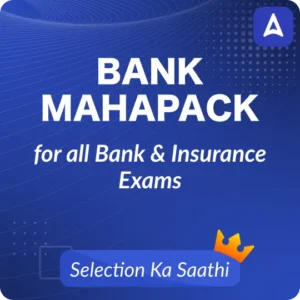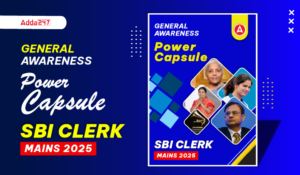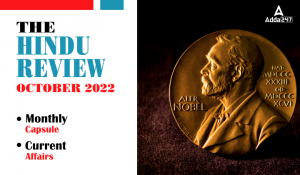Table of Contents
The Verbal Reasoning section is an essential component of bank exams like IBPS PO, SBI PO, and RBI Grade B. It tests a candidate’s ability to process and evaluate written information logically. This section requires strong analytical thinking and comprehension skills to solve different types of questions effectively. In this article, we will cover the important topics in Verbal Reasoning, explore the question patterns, provide useful preparation tips, and include sample questions to help you master this section.
Verbal Reasoning for Bank Exams
Verbal Reasoning is a crucial part of the reasoning section in bank exams, and mastering its key topics can significantly enhance your performance. Below are some of the most commonly tested topics:
- Syllogism: These questions involve a set of statements followed by conclusions. Candidates must determine which conclusions logically follow from the given statements, testing their ability to analyze logical relationships.
- Seating Arrangement: This includes arranging people or objects in specific patterns, such as linear or circular arrangements. Solving these requires strong visualization and logical sequencing skills.
- Puzzles: Various types of logical puzzles, including floor-based arrangements and scheduling problems, are asked in exams. These require analytical thinking and the ability to manage multiple conditions simultaneously.
- Blood Relations: Questions in this topic require candidates to determine family relationships based on given information. Understanding hierarchical family structures and applying logical reasoning is essential.
- Direction Sense: These questions assess the ability to track movements based on given directions (North, South, East, West) and determine the final position or direction after a series of movements.
- Logical Deductions & Assumptions: Candidates must identify valid conclusions, assumptions, or inferences based on given statements or passages, testing their analytical and reasoning abilities.
- Statement & Conclusion: A given statement is followed by multiple conclusions, and candidates must evaluate which conclusions logically follow from the statement, assessing their judgment and logical interpretation.
- Statement & Argument: These questions present a statement followed by arguments either in favor of or against it. Candidates must determine the strength of these arguments and their logical validity.
- Input-Output: These involve a sequence of inputs being processed through a specific pattern or set of operations. Candidates need to recognize the pattern and predict the next step in the sequence.
- Coding-Decoding: In this topic, information is encoded using specific rules, and candidates must decode the pattern to extract the correct message. These questions test pattern recognition and logical decoding skills.
Tips to Solve Verbal Reasoning Questions
To excel in Verbal Reasoning for bank exams, start by understanding the key topics like Syllogism, Seating Arrangement, Blood Relations, and Coding-Decoding. Practice regularly with mock tests and previous years’ papers to improve speed and accuracy. Use diagrams for complex problems like Seating Arrangements and Blood Relations. Apply the elimination technique to narrow down answer choices and avoid unnecessary confusion. Focus on logical thinking, time management, and staying updated with new question patterns to enhance performance in this section.
Verbal Reasoning Questions for Bank Exams
Q01. If it is possible to make a meaningful word from the 2nd, 3rd, 5th and 6th letters of the word “COMPREHENSIVE“, then which will be the 3rd letter of that meaningful word? If no such meaningful word is formed, then mark the answer as ‘Y’. If more than one meaningful word is formed, then mark the answer as ‘X’.
(a) Y
(b) O
(c) E
(d) R
(e) X
Q02. Which of the following letter will become the exact middle letter, if all the letters of the word “COPYRIGHT” are arranged in reverse alphabetical order from left to right?
(a) P
(b) H
(c) O
(d) R
(e) None of the above
Q03. If it is possible to make a meaningful word from the 1st, 3rd, 4th and 6th letters of the word “ANTIFLAME“, then which will be the 3rd letter of that meaningful word? If no such meaningful word is formed, then mark the answer as ‘Y’. If more than one meaningful word is formed, then mark the answer as ‘X’.
(a) Y
(b) T
(c) A
(d) I
(e) X
Q04. How many pairs of letters are there in the word “ORGANICS” which has as many letters between them in the word as they have in the alphabetical series (both in forward and backward direction)?
(a) One
(b) Two
(c) Three
(d) Four
(e) None of the above
Q05. How many pairs of letters are there in the word “PREMIUM” which has as many letters between them in the word as they have in the alphabetical series (both in forward and backward direction)?
(a) One
(b) Two
(c) Three
(d) Four
(e) None of the above
Directions (06-10): Study the following information carefully and answer the questions given below.
Eight people A, B, C, D, E, F, G and H were born in eight different months i.e., January, March, April, May, June, July, September, and November of the same year but not necessarily in the same order. Each of them belongs to different companies i.e., Myntra, Flipkart, Snapdeal, Grofers, Big-basket, Amazon, Lenskart, and Voot but not necessarily in the same order.
C was born immediately before F. One person was born between B and C. B belongs to Voot and was born after May. A was born before E. The one who belongs to Flipkart was born after March in the month of 31 days. Two people were born between the one who belongs to Big-basket and the one who belongs to Grofers. D was born in September. G was born after B but not immediately after. A does not belong to Big-basket and Myntra. E belongs to Lenskart and was born in the month of 31 days. The one who was born in September does not belong to Big-basket. Three people were born between the one who belongs to Grofers and D who does not belong to Snapdeal and Myntra.
Q06. Who belongs to Amazon?
(a) F
(b) C
(c) A
(d) D
(e) None of these
Q07. Who among the following was born in November?
(a) The one who belongs to Myntra
(b) F
(c) The one who belongs to Snapdeal
(d) H
(e) None of these
Q08. If G is related to Big-basket and H is related to Flipkart, in the same way, B is related to ____?
(a) Grofers
(b) Snapdeal
(c) Myntra
(d) Amazon
(e) None of these
Q09. Four of the following five are alike in a certain way and hence form a group. Who among the following doesn’t belong to that group?
(a) A, Lenskart
(b) D, Voot
(c) F, Grofers
(d) H, Amazon
(e) B, Flipkart
Q10. How many people are older than the one who belongs to Voot?
(a) One
(b) Three
(c) Five
(d) Four
(e) None of these
Directions (11-15): A word and number arrangement machine when given an input line of words and numbers rearranges them following a particular rule in each step. The following is an illustration of input and rearrangement.
Input: 30 update 56 record 27 economic 23 trending 20 power 15 approval
Step I: 20 30 update 56 record economic 23 trending power 15 approval 27
Step II: power 20 30 56 record economic 23 trending 15 approval 27 update
Step III: 30 power 20 56 record economic trending 15 approval 27 update 23
Step IV: record 30 power 20 56 trending 15 approval 27 update 23 economic
Step V: 56 record 30 power 20 trending approval 27 update 23 economic 15
Step VI: trending 56 record 30 power 20 27 update 23 economic 15 approval
Step VI is the last step of the above arrangement.
As per the rules followed in the steps given above, find out in each of the following questions the appropriate step for the given input.
Input: 48 opinion 66 gallery 89 injury 77 monsoon 22 decide 35 eclipse.
Q11. Which of the following element is 3rd to the right of 5th element from the left end in step III?
(a) eclipse
(b) 35
(c) 89
(d) decide
(e) None of these
Q12. What is the position of the word ‘monsoon’ in step IV?
(a) 3rd from right
(b) 4th from right
(c) 5th from left
(d) 6th from left
(e) None of these
Q13. What is the sum of the element which is second from the left end in step II and sixth from right end in step IV?
(a) 75
(b) 57
(c) 60
(d) 34
(e) None of these
Q14. Which of the following element is exactly between ‘decide’ and ‘77’ in step V?
(a) Eclipse
(b) Monsoon
(c) 89
(d) Opinion
(e) None of these
Q15. Which of the following element is seventh from the right end in step II?
(a) gallery
(b) 77
(c) injury
(d) monsoon
(e) None of these
Directions (16-20): Read the following information carefully to give the answers to the questions.
In a certain code of language,
‘College must close soon’ is coded as ‘jk tr wq pq’
‘Lockdown may extend soon’ is coded as ‘pq in hg vc’
‘Country must imposed night lockdown’ is coded as ‘vz wq dz hg ql’
‘Country extend college imposed’ is coded as ‘ql vz in tr’
Q16. What is the code of ‘may soon’?
(a) hg in
(b) vc hg
(c) pq vc
(d) jk pq
(e) None of the above
Q17. Which of the word is coded as ‘dz’?
(a) Colleges
(b) Country
(c) Close
(d) Night
(e) Lockdown
Q18. What is code of ‘college close’?
(a) hg wq
(b) jk tr
(c) vz dz
(d) vc dz
(e) None of the above
Q19. If the code of ‘imposed lockdown thoroughly’ is ‘vz hg tq’ then what may be the code of ‘delhi country close thoroughly’?
(a) st ql jk tq
(b) tq vz kl tr
(c) vc qr kl bn
(d) ql qt tr vq
(e) st bd mk tr
Q20. What is the code of ‘extend college’?
(a) in vc
(b) vg vc
(c) ql bv
(d) dz vc
(e) in tr
Directions (21-25): In the following questions assuming the given statement to be true, find which of the conclusion(s) among given conclusions is/are definitely true and then give your answers accordingly.
Q21. Statements: Y < E ≤ O, L > X ≤ T < E, K ≥ D > B, U ≤ G < B = N
Conclusions: I. D > U
II. L < O
(a) Only I is true
(b) Only II is true
(c) Either I or II is true
(d) Neither I nor II is true
(e) Both I and II are true
Q22. Statements: C ≥ K < V, X < Y ≥ L = C, L ≤ K ≥ O > M
Conclusions: I. Y > O
II. O > Y
(a) Only I is true
(b) Only II is true
(c) Either I or II is true
(d) Neither I nor II is true
(e) Both I and II are true
Q23. Statements: U > S = D ≤ F, Z < T < D, Q = W ≤ M < Z, L > S = N < R
Conclusions: I. R > T
II. U > W
(a) Only I is true
(b) Only II is true
(c) Either I or II is true
(d) Neither I nor II is true
(e) Both I and II are true
Q24. Statements: A ≤ K, N > M < T, F ≥ N, F = I
Conclusions: I. M < F
II. N < I
(a) Only I is true
(b) Only II is true
(c) Either I or II is true
(d) Neither I nor II is true
(e) Both I and II are true
Q25. Statements: T < I > J = N >L, J < O
Conclusions: I. N > O
II. O > T
(a) Only I is true
(b) Only II is true
(c) Either I or II is true
(d) Neither I nor II is true
(e) Both I and II are true
Directions (26-30): Study the following data carefully and answer the questions accordingly.
5 € 8 % M V ¥ © 4 # µ @ 2 3 Z B N £ β 9 X C $ ∞ 6 7 &*
Q26. How many symbols are there in the series each of which is immediately preceded by a consonant and immediately followed by a symbol?
(a) Three
(b) One
(c) None
(d) Four
(e) More than four
Q27. How many symbols are there in the series each of which is immediately preceded and immediately followed by a consonant?
(a) Four
(b) Five
(c) Three
(d) One
(e) None
Q28. How many elements are there between M and C if all the symbols are dropped down from the given series?
(a) Eleven
(b) Ten
(c) Six
(d) Nine
(e) Three
Q29. Which amongst the following element is 8th to the left of 4th number from right end?
(a) N
(b) V
(c) M
(d) %
(e) None of these
Q30. Which amongst the following element is 15th from left end?
(a) N
(b) V
(c) B
(d) Z
(e) None of these
Directions (31-33): Read the following information carefully and answer the questions which follow.
Kiran started walking from her home towards the north and walked for 10km and reached Point A, then she turned towards her right and walked for 6km and reached Point G, then she walked 6km towards the north and reached Point K after that she turned towards her west and walked for 9km and reached Point B, then she turned towards her south and walked 18km and reached Point X finally she turned towards the west and walked for 12km and reached her school.
Q31. What is the total distance between the final position and starting position of Kiran?
(a) 72km
(b) 61km
(c) 18km
(d) 64km
(e) None of these
Q32. What is the direction of Point B with respect to the Kiran’s home?
(a) North-west
(b) North
(c) North-east
(d) South
(e) South-west
Q33. If Point N is 6km to the south of Point G, then what is the direction of Point A and Point K with respect to Point N respectively?
(a) South-east and South
(b) South-west and South-east
(c) North-west and North
(d) North-west and North-east
(e) None of these
Directions (34-35): Read the following information carefully and answer the questions which follow.
Leena started walking in the north direction and walked 10m. Now, she walked 12m in east direction and turned southwards to walk 15m. From here, she took two consecutive right turns to walk 15m and 5m respectively. Finally, she moved westwards and reached the Club after walking 10m.
Q34. What is the shortest distance between Lenna’s staring point and the Club?
(a) 10m
(b) 20m
(c) 15m
(d) 13m
(e) None of these
Q35. Leena’s second turning point is in which direction of the Club?
(a) North
(b) East
(c) South-West
(d) North-East
(e) None of these
Directions (36-40): In the question below some statements are given followed by the conclusions. You have to take the given statements to be true even if they seem to be at variance with commonly known facts. Read all the conclusions and then decide which of the given conclusions logically follows from the given statements disregarding commonly known facts.
Q36. Statements: No Slim is Smooth.
Only Fast are Slow.
Some Fast are smooth.
Conclusion: I. Some Fast are Slim.
II. No Slow is Slim
(a) Only conclusion I follows
(b) Only conclusion II follows
(c) Either conclusion I or II follows
(d) Both conclusions I and II follow
(e) Neither conclusion I nor II follows
Q37. Statements: All Sheep are Cattles.
Some Cattle are Grazing.
Only a few Cows are Grazing.
Some Sheep are Bleating.
Conclusions: I. All Cow can be Grazing.
II. Some Cattle are Bleating.
(a) Only conclusion I follows
(b) Only conclusion II follows
(c) Either conclusion I or II follows
(d) Both conclusions I and II follow
(e) Neither conclusion I nor II follows
Q38. Statements: Only Fictions are Novel.
Some Story are Fictions.
Only a few Romantics are Story.
Conclusions: I. Some Romantic are not Story.
II. A few Novels are not Story.
(a) Only conclusion I follows
(b) Only conclusion II follows
(c) Either conclusion I or II follows
(d) Both conclusions I and II follow
(e) Neither conclusion I nor II follows
Q39. Statements: All Rules are Methods.
A few Method are Tricks.
Only Tricks are Great.
Conclusions: I. No Great are Rule
II. Some Trick are Rule.
(a) Only conclusion I follows
(b) Only conclusion II follows
(c) Either conclusion I or II follows
(d) Both conclusions I and II follow
(e) Neither conclusion I nor II follows
Q40. Statements: Only a few Hours are Seconds.
All Minutes are Seconds.
No Seconds are Time.
Conclusions: I. All Hours being Seconds is a possibility
II. A few Minutes are not Time
(a) Only conclusion I follows
(b) Only conclusion II follows
(c) Either conclusion I or II follows
(d) Both conclusions I and II follow
(e) Neither conclusion I nor II follows
| Solutions | |||||||||
| 1 | 2 | 3 | 4 | 5 | 6 | 7 | 8 | 9 | 10 |
| d | c | d | a | c | d | a | a | b | d |
| 11 | 12 | 13 | 14 | 15 | 16 | 17 | 18 | 19 | 20 |
| b | d | b | a | c | c | d | b | a | e |
| 21 | 22 | 23 | 24 | 25 | 26 | 27 | 28 | 29 | 30 |
| a | c | e | a | d | a | e | d | b | d |
| 31 | 32 | 33 | 34 | 35 | 36 | 37 | 38 | 39 | 40 |
| b | a | c | d | d | b | b | d | a | b |




 GA Capsule for SBI Clerk Mains 2025, Dow...
GA Capsule for SBI Clerk Mains 2025, Dow...
 The Hindu Review October 2022: Download ...
The Hindu Review October 2022: Download ...
 Adda247 Project Rockstar, Check Video Ed...
Adda247 Project Rockstar, Check Video Ed...


